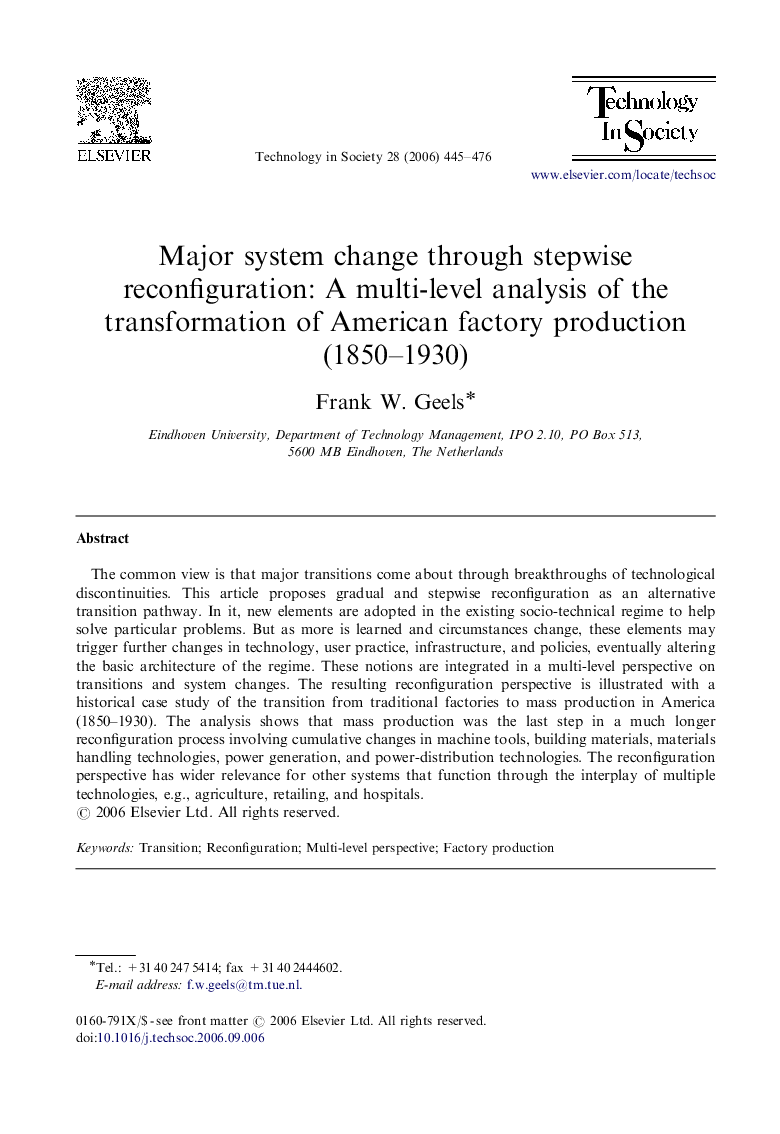| Article ID | Journal | Published Year | Pages | File Type |
|---|---|---|---|---|
| 375430 | Technology in Society | 2006 | 32 Pages |
The common view is that major transitions come about through breakthroughs of technological discontinuities. This article proposes gradual and stepwise reconfiguration as an alternative transition pathway. In it, new elements are adopted in the existing socio-technical regime to help solve particular problems. But as more is learned and circumstances change, these elements may trigger further changes in technology, user practice, infrastructure, and policies, eventually altering the basic architecture of the regime. These notions are integrated in a multi-level perspective on transitions and system changes. The resulting reconfiguration perspective is illustrated with a historical case study of the transition from traditional factories to mass production in America (1850–1930). The analysis shows that mass production was the last step in a much longer reconfiguration process involving cumulative changes in machine tools, building materials, materials handling technologies, power generation, and power-distribution technologies. The reconfiguration perspective has wider relevance for other systems that function through the interplay of multiple technologies, e.g., agriculture, retailing, and hospitals.
